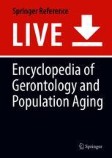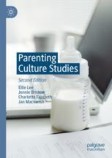Search
Search Results
-
Understanding Rock Art: What Neuroscience Can Add
In this chapter, I will make a case that neuroscience can help with the understanding of any art, and that in the context of rock art, with its deep...
-
Evolution, Neuroscience and Embodied Cognition
Vignette C describes a moment when Connie (aged 27 months) attempts to clasp her hands in imitation of a movie character pleading with her father....
-
Inertia in cognitive processes: the case of the COVID-19 vaccine
Developments in factor analysis (Spearman in Am J Psychol 15:201-292, 1904); Thurstone in Multiple factor analysis, University of Chicago Press,...

-

-
What can cognitive neuroscience do for cultural sociology?
Can cognitive neuroscience contribute to cultural sociology? We argue that it can, but to profit from such contributions requires develo** coherent...
-
Enhancing Cognitive Resilience in Adolescence and Young Adults: A Multidimensional Approach
Resilience, as a trait, process, or outcome, is an important factor to explain behavioral diversity between individuals and population groups in face...
-
The Cognitive Dimension
Cognition, and mental processes, played an important role in early social theory, especially in the thought of Comte and Spencer, but a gradually...
-
Cognitive Optimisation and Schizophrenia: Assembling Heterogeneity, Overcoming the Precariousness of Life, and Challenging Public Health Policies in Psychiatry in France
Cognitive remediation therapy (CRT) aims to optimise cognitive abilities of people who suffer from schizophrenia in order to improve their social...
-
The Role of Glycaemic Control in Cognitive Functioning
Effective glycaemic control is vitally important to protecting brain function, as the brain relies primarily on circulatory blood glucose crossing...
-
Children’s Criminal Perception; Lessons from Neurolaw
In criminal justice systems, after reaching the initial age there are levels of responsibility dictated by the intellectual development and the type...

-
Active Inference and Social Actors: Towards a Neuro-Bio-Social Theory of Brains and Bodies in Their Worlds
Although research including biological concepts and variables has gained more prominence in sociology, progress assimilating the organ of experience,...

-

-
Beyond black and white: heibaika, neuroparenting, and lay neuroscience
Heibaika (Mandarin for black-and-white cards) are tools that Taiwanese parents use for infants below 3 months old. These cards are claimed to...

-
Brains: Self and Personhood
Neuroscience has become the new catchword. Just as DNA revolutionized thinking around human identity, so too does the study of our brains expect...
-
Affective Responses to Natural and Technological Disasters; An Evolutionary Perspective
Objectives and MethodAnecdotal reports indicate more severe psychological distress following technological catastrophes in comparison to natural...
-

-
Neurobiology, Morality, and Agency
This chapter outlines and explains the latest finding in the neuroscience of moral judgments. It examines the implications of novel techniques that...
-
Babies’ Brains and Parenting Policy: The Insensitive Mother
This chapter explores how, since the late 1990s, ‘brain claims’ entered parenting discourse, first in the US, Canada, Australia, New Zealand, and the...
-
Netflix series 13 reasons why as compound suicide messages: using the Galileo model for cognitive map** and precise measurements
The Netflix series 13 Reasons Why ( 13RW ) stirred up considerable controversy when it was first released in 2017. Although researchers across...

-
Politics of Plasticity: Implications of the New Science of the “Teen Brain” for Education
In recent years, claims that developmental brain science should inform pedagogical approaches have begun to influence educational policies. This...
